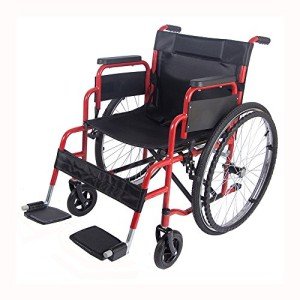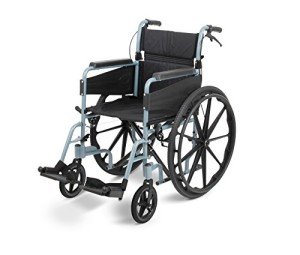What's The Current Job Market For Self Propelled Wheelchair Profession…
관련링크
본문
 Self Propelled Wheelchair With Attendant Brakes
Self Propelled Wheelchair With Attendant BrakesSelf-propelled wheelchairs equipped with attendant brakes can be a great option for those who require extra stability and support when traveling. These chairs feature rear-drive wheels, as well as a variety of accessories, including swing-away leg rests, or flip-up armrests.
There are very few biomechanical studies of the movement and turning of attendant propelled chairs. This area requires more research.
Seat length
The width of a chair is the distance between the frame's edges. This what is a self propelled wheelchair essential when choosing the right wheelchair, since different users may require different sizes. For instance, those with large thighs might need to choose a wheelchair with a wider seat. To determine a suitable size, you must sit in the chair and take a measurement of the width of your thigh area. The most effective method to measure is using a yardstick. It will give you a precise measurement.
The width of the seat on a self-propelled wheelchair with brakes that are attendant is an important factor to consider, especially for caregivers. A seat that is larger allows the user to move comfortably and freely. It will also make it easier for caregivers to maneuver the chair through tight spaces. Additionally, many attendant controlled wheelchairs are lightweight and smaller wheels to ensure ease of pushing and maneuvering. This makes them suitable for those with weak upper body strength and coordination.
A wheelchair should also have brakes that are simple to use. These are important for ensuring safety, both while driving and when transferring. They also increase the user's autonomy and lower the stress level. Research conducted at Dundee University has shown that the most effective braking system for a wheelchair is one with an adjustable foot lever that is easily accessed and used with one hand.
In contrast to self propelled wheelchairs lightweight-propelled chairs, which feature larger rear wheels and hand rims, attendant-controlled wheelchairs have smaller wheels and are designed to be driven by caregivers. These types of wheelchairs are great for people with weak upper body strength. They are also able to be easily moved and used in a variety of environments. Additionally, the majority of models feature cable brakes for added security and convenience. Some models are able to fold flat for easy storage and transportation in a vehicle. In addition, many models are designed to provide comfort for the user with features like padded seats and armrests.
Seat height
The seat height of a self propelled wheelchairs for sale near me-propelled wheelchair with attendant brakes can differ significantly and should be carefully considered. The most comfortable position is a sufficient height that allows the user to sit straight without stress. However the height of the seat may also influence the amount of force needed to push the wheelchair forward. This can impact the performance of a transit wheelchair vs self propelled, and is especially important when a chair is equipped with front-wheel drive.
The position of the pushing handles can make a significant difference to the ease with which a wheelchair is pushed. The majority of modern wheelchairs have handles that are positioned either horizontally across the rear of the frame or as backward-pointing levers extending from the chair back. However the results of recent pushing studies have indicated that these handles are not suitable for wheelchair usage.
Wheelchairs are utilized by a range of people in homes hospitals, as well as other settings. Many of them are unable to walk and need assistance in order to move around. People who are family members or close friends of the wheelchair occupant might not be able walk and have difficulty to maneuver wheelchairs both indoors and outdoors. Additionally, they may have difficulty transferring the occupant in and out of the chair.
One of the most important issues for the caregiver is the capacity to maintain control of the wheelchair in a setting that is often uncontrolled. A wheelchair with good manoeuvrability is essential, as are the wheels and puncture-proof tyres. A well-constructed castor trail (the distance between the wheel axis and the axes of the handle holder) is essential to ensure a smooth ride.
The Ugo Esteem Lightweight self propelled wheel chair Propelled Wheelchair with Attendant Brakes is a fantastic example of a well-designed wheelchair that is easy to push. This model is made of a lightweight aluminum alloy frame, with a two-year frame guarantee and puncture proof tyres. It has adjustable footplates as well as armrests, an elevated leg rest option (please select from the drop-down menu) and an ultra-compact folding frame that makes it easy to transport and to store.
Seat depth
The seat's depth is an important element in determining the ease to move the wheelchair. A deeper seat can prevent the user from sliding off the chair. A shallow seat may also cause discomfort and injuries. Ideally, a wheelchair should have a depth of at minimum 2 inches. This can provide enough clearance to avoid small obstacles and get up kerbs.
Besides the seat width, the height of the armrests and the seat are crucial in determining the ideal size of the wheelchair for a particular user. A taller person will need an elevated seat, while smaller people will require a lower one. If the wheelchair is intended to be used to support postural needs the backrest should be higher than normal. This will ensure that the wheelchair is comfortable for the user and will allow them to sit upright.
The amount of force applied to the wheels determines the rolling resistance of a wheelchair. This force is dependent on the radius of curvature of the wheel and the condition of the surface. The wheels can be made to reduce their rolling resistance by making use of softer rubber, reducing the friction between the tire and the road, or by extending the width of the rim. Furthermore, the wheel's force of inertia is a major aspect, and it can be reduced by altering the design of the casting.
For instance for instance, the ugo Esteem Lightweight Self Propelled Wheelchair has a castor trail that is adjusted to meet the needs of the individual. This makes it easier to turn and less likely to shimmy while starting from a rest position. The adjustable footrest height and angle, the seat cushion and the backrest make it more suited for every user.
The seat height of a wheelchair is measured by measuring from the base of the spine to the back of the knee. Typically the measurement should be taken by a professional to prevent injury to the user. It is essential to determine whether the user requires a footrest, and if so, the height.
Armrests
Wheelchairs are frequently used by nursing staff in hospitals to move patients between departments and also as the primary method of transportation for patients who are not able to walk. Transferring patients in and out of wheelchairs can be difficult for attendants who must lift them into and out each time, and also pushing and manoeuvring the chair across various kinds of terrain. The ergonomic design should aim to make the propulsion and operation of these chairs as simple as is possible for attendants by making them less physically demanding on them. The handling characteristics of these chairs, including their rolling resistance and turning resistance, the height of the handle and the location of brakes, need to be optimised biomechanically in order to maximise comfort for the people who are using them.
The armrests of a self propelled wheelchair with attendant brakes should be placed in a manner that allows people with strong arms to assist themselves in rising from the chair and they must be able to be removed in order to ensure that they do not block the access of those who are disabled when they are lifted into the seat. The chair prototype developed in Dundee included armrests that protruded forward to give support to the hands of the user, and could be folded back when not in use.
It is crucial that the chair is comfortable and safe regardless of whether the person sits in it for long periods of time or only for short excursions. The padded backrest and seat of this model are covered with clean nylon that is strong and durable. In addition, the foot rests on this model are movable and can be swung away so that transfers are made much easier.
The lightweight attendant controlled chair comes with a variety of features that can be beneficial for the caregiver or the attendant. These include adjustable footplates, flip-up, adjustable armrests to help with side transfers and assist them get closer to the desk cable brakes to slow down speed, and the stepping tube for climbing curbs. It also comes with a backrest that folds down to make it easy to store and transportation. The lightweight wheelchair is available in two sizes and comes with a 12-month warranty as standard.


